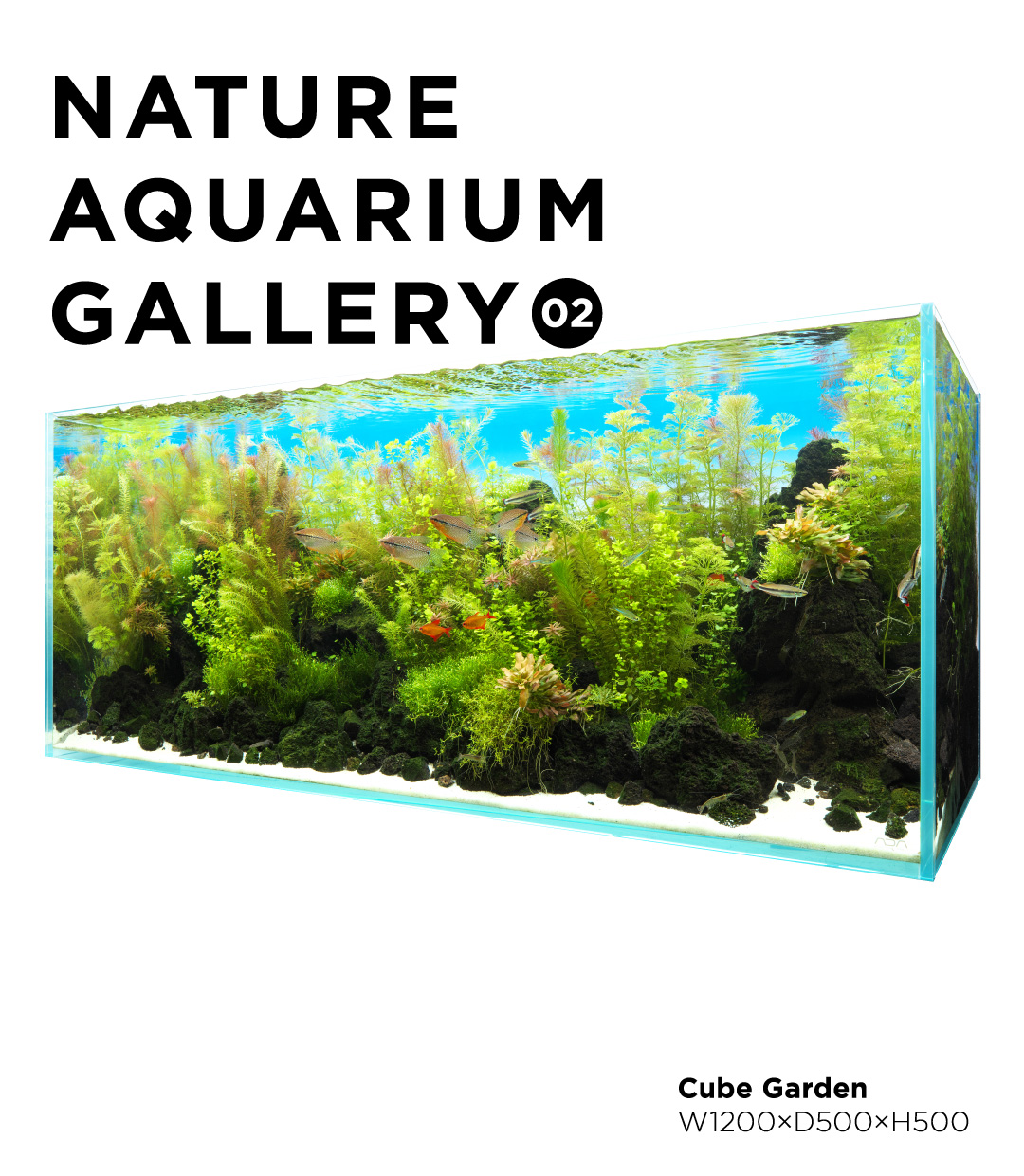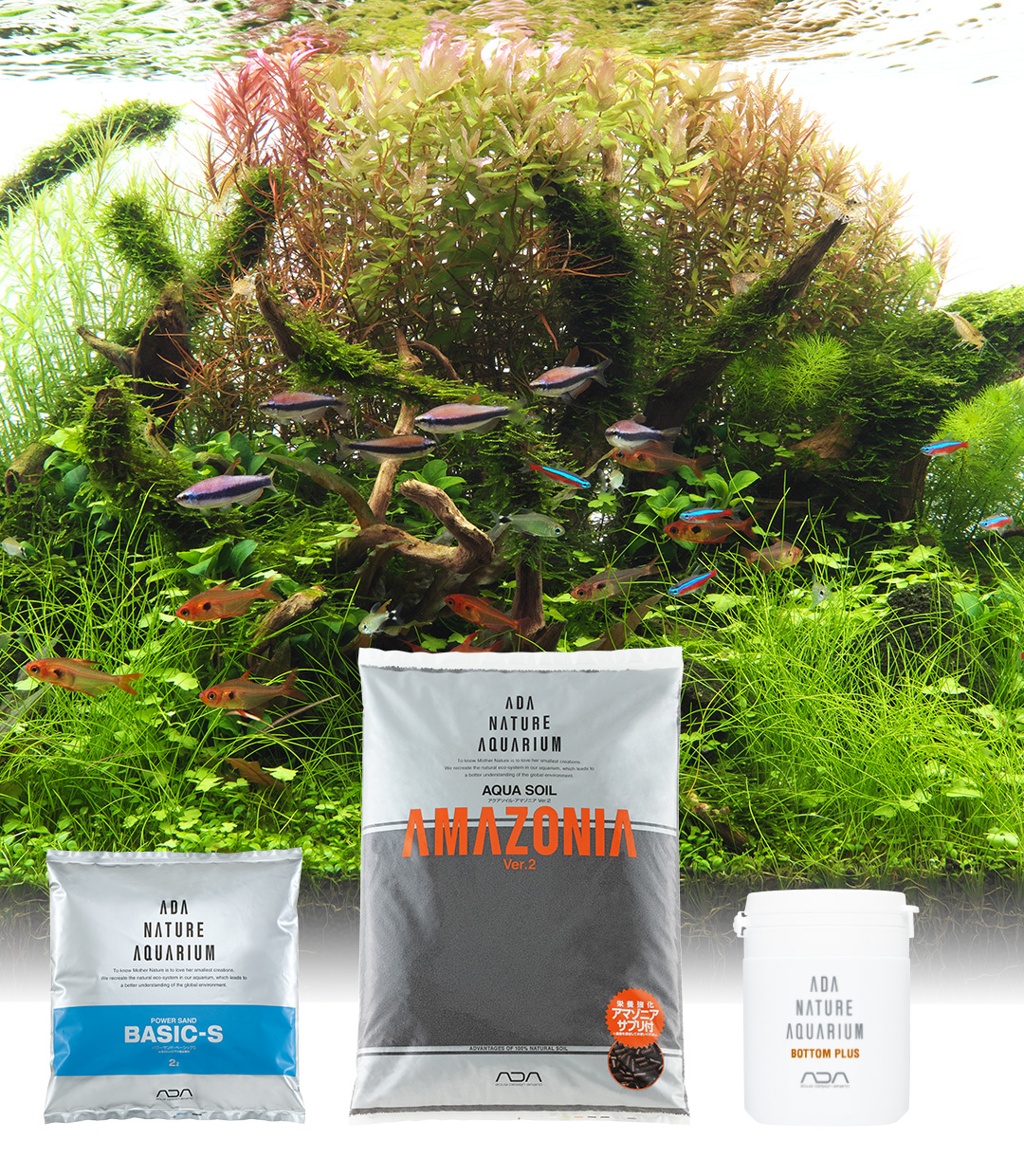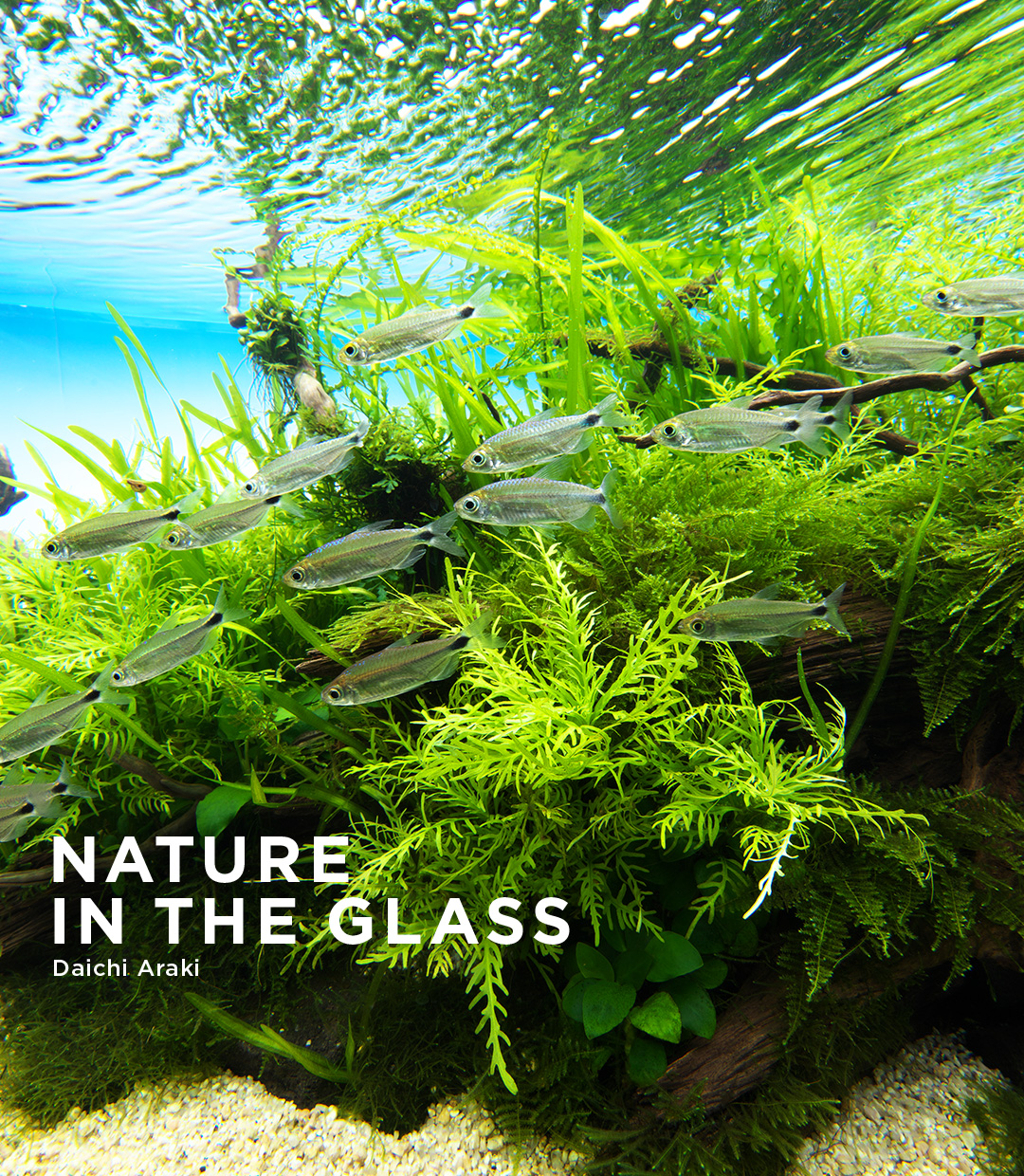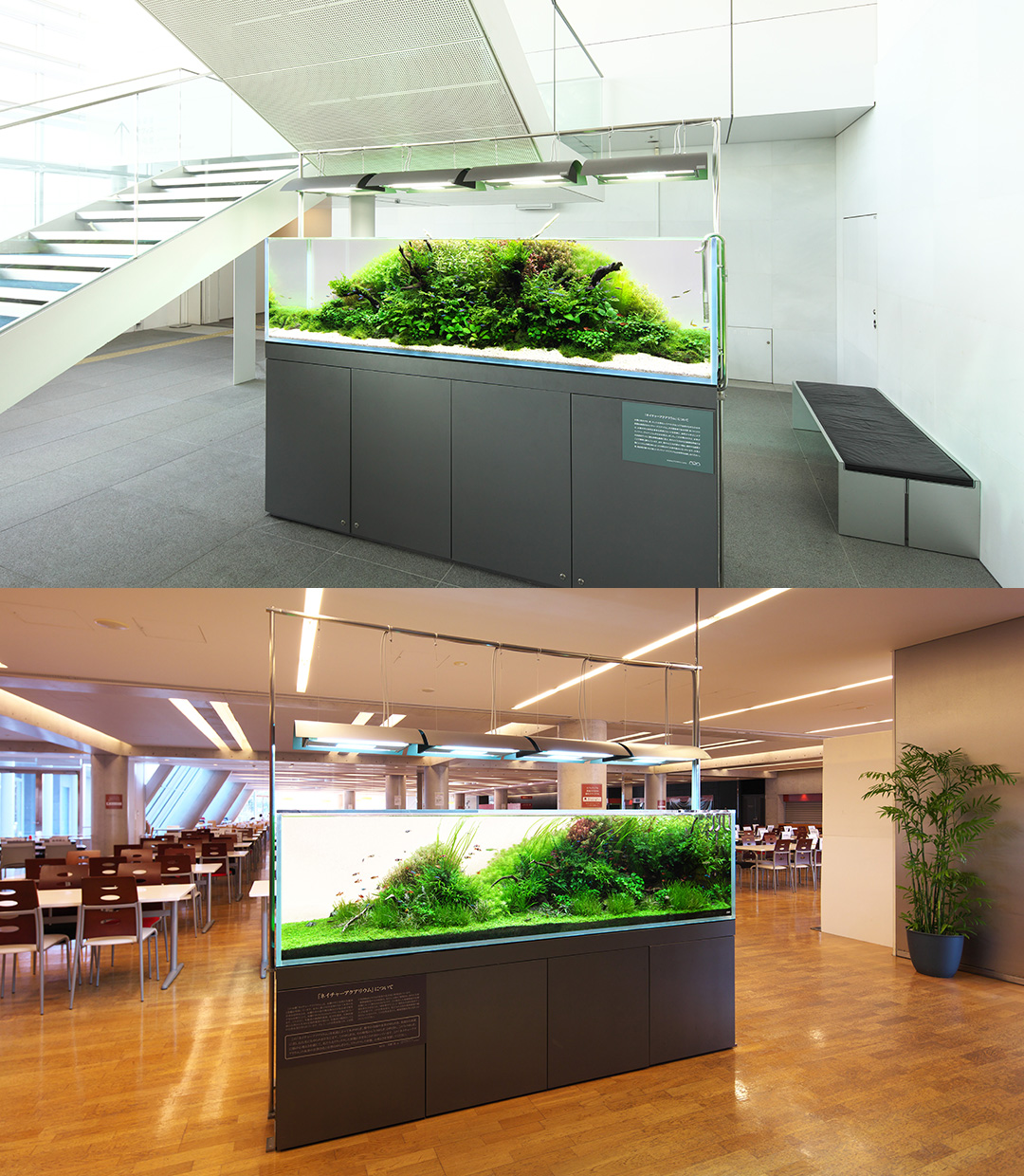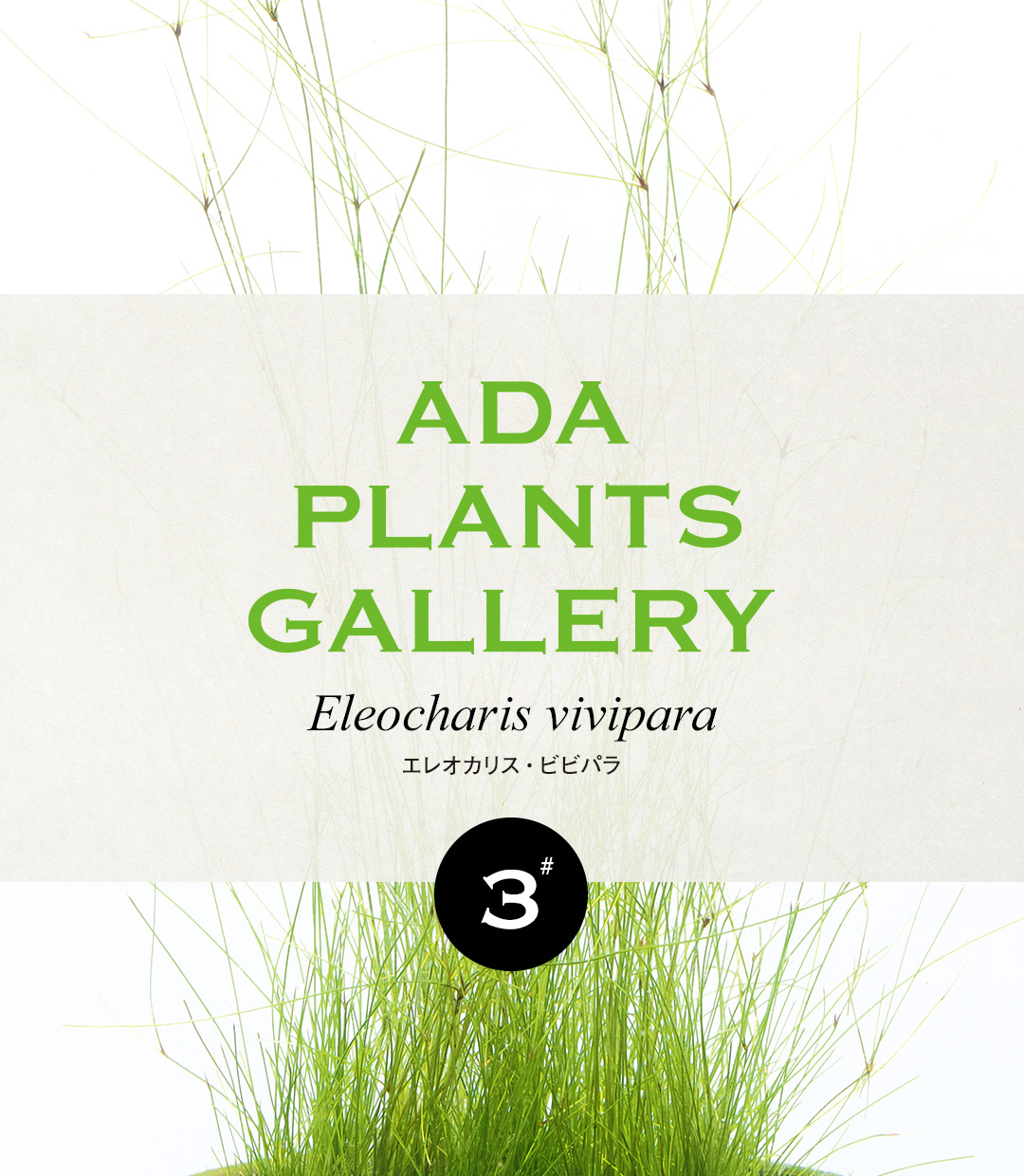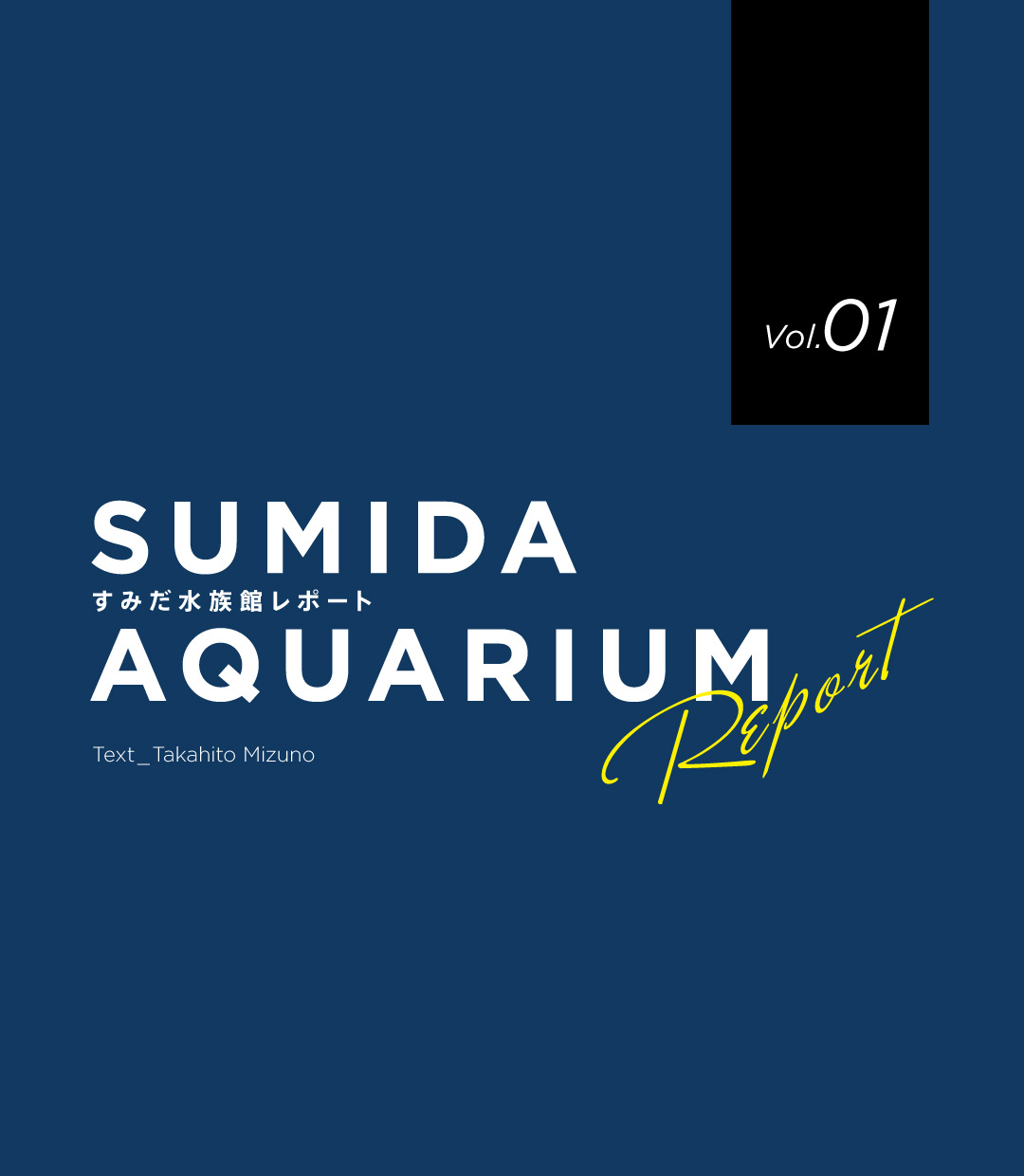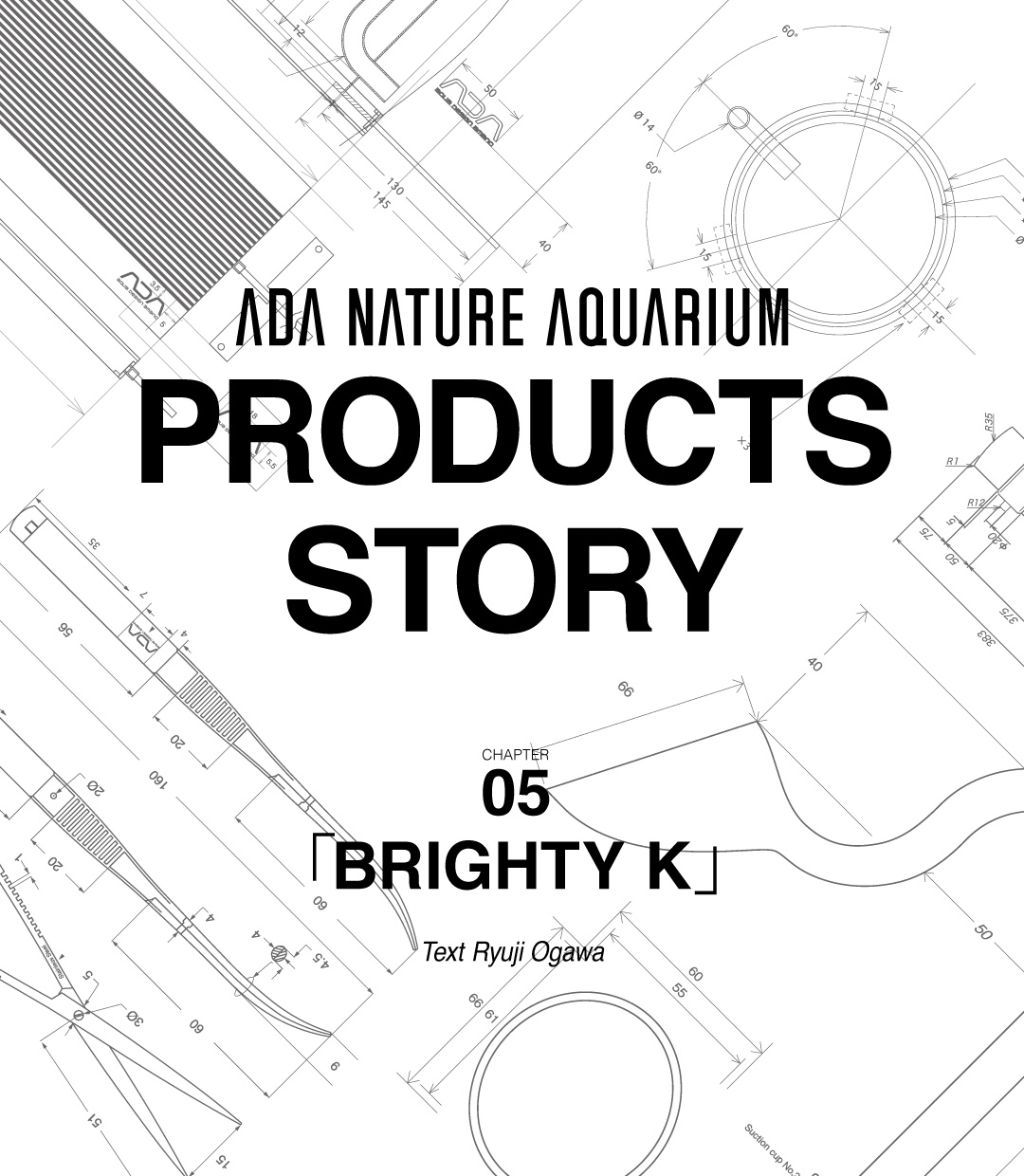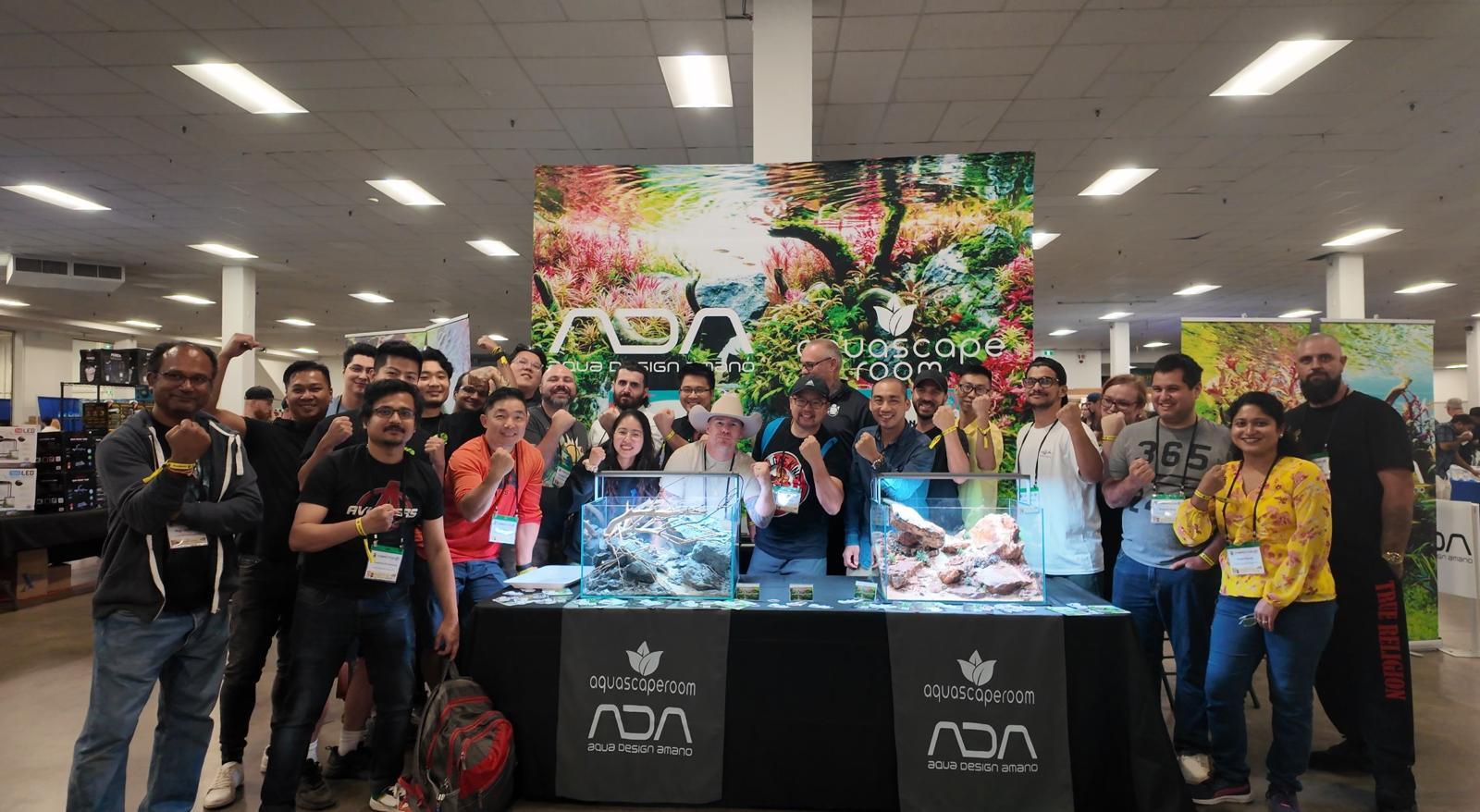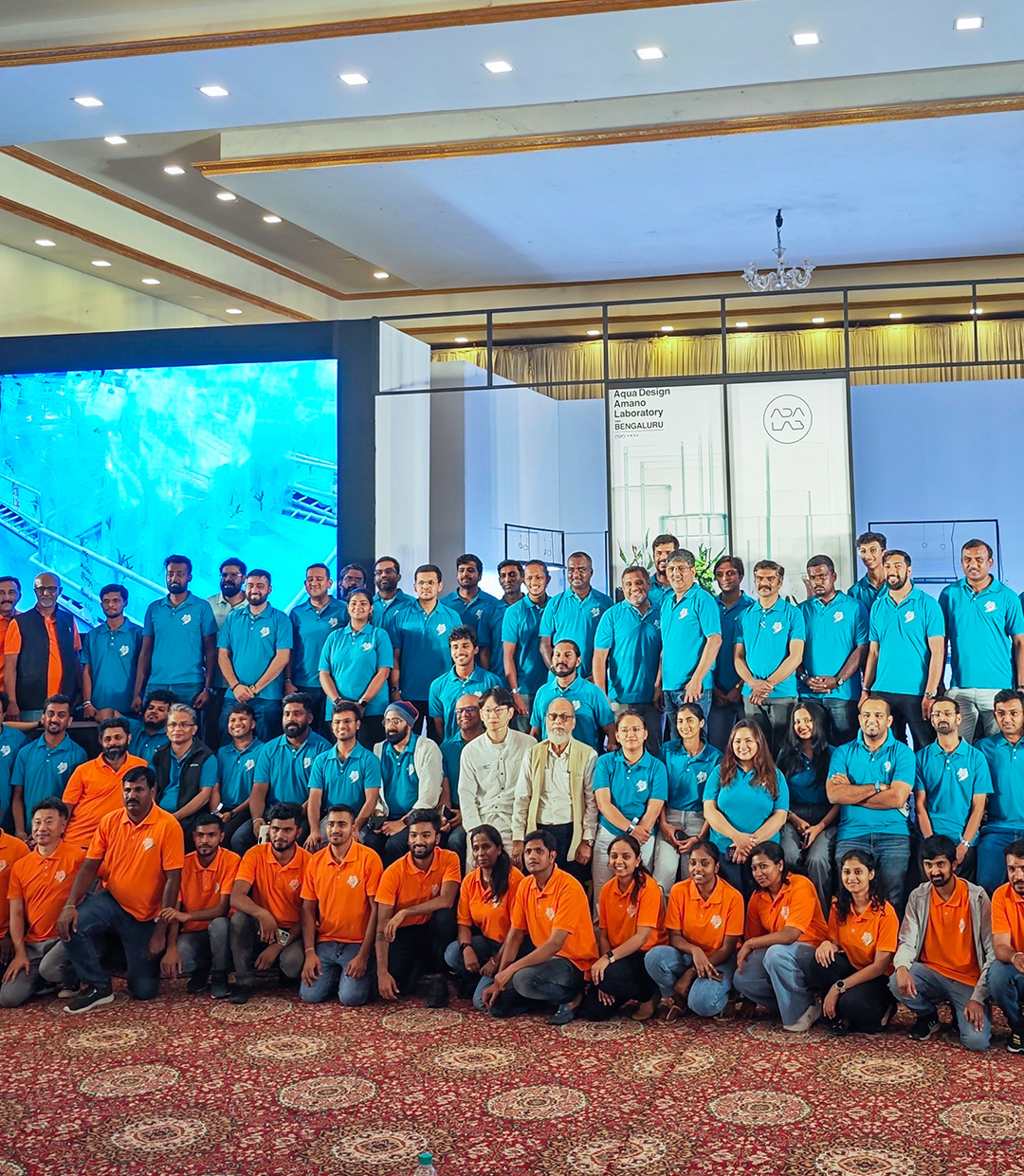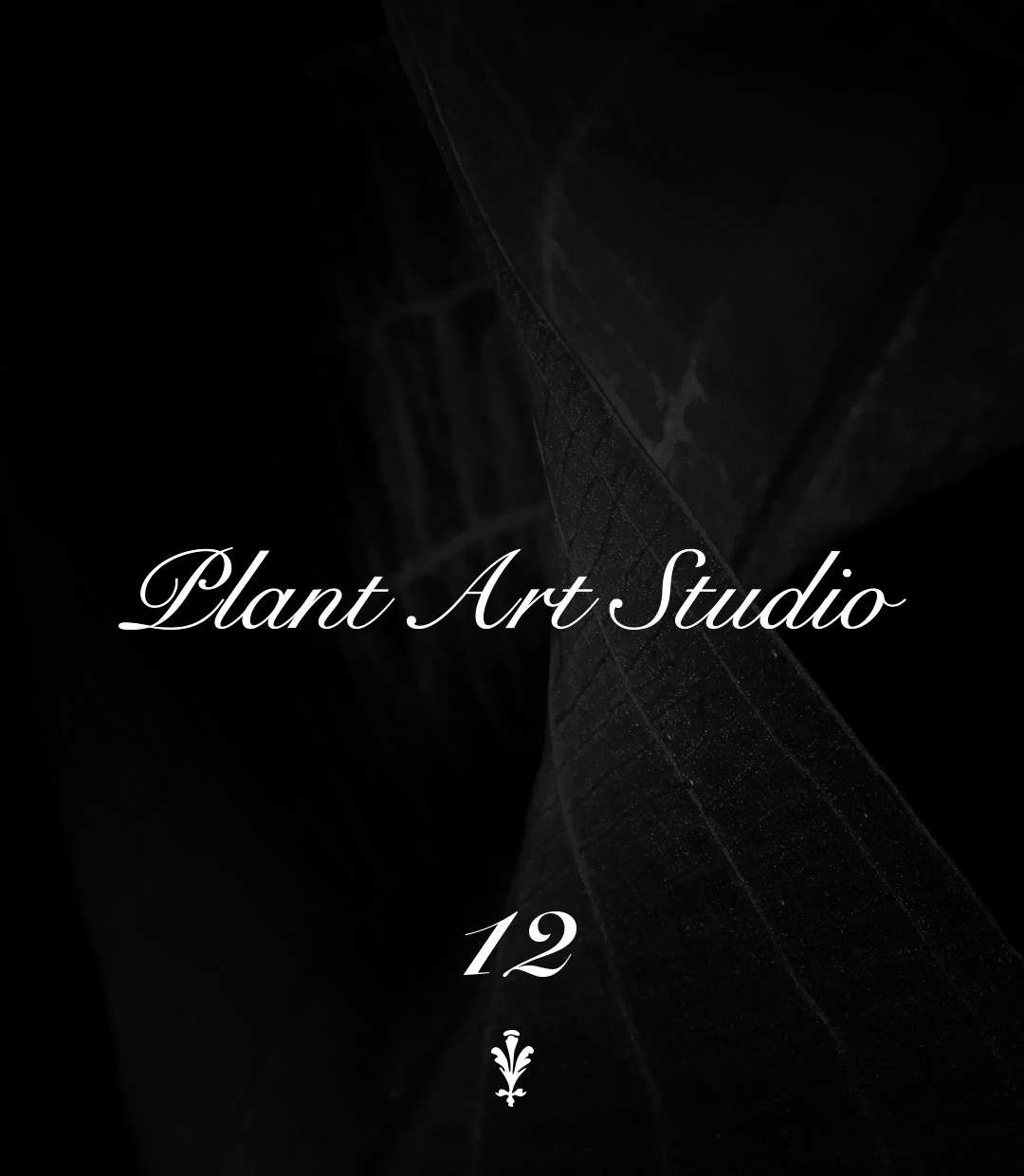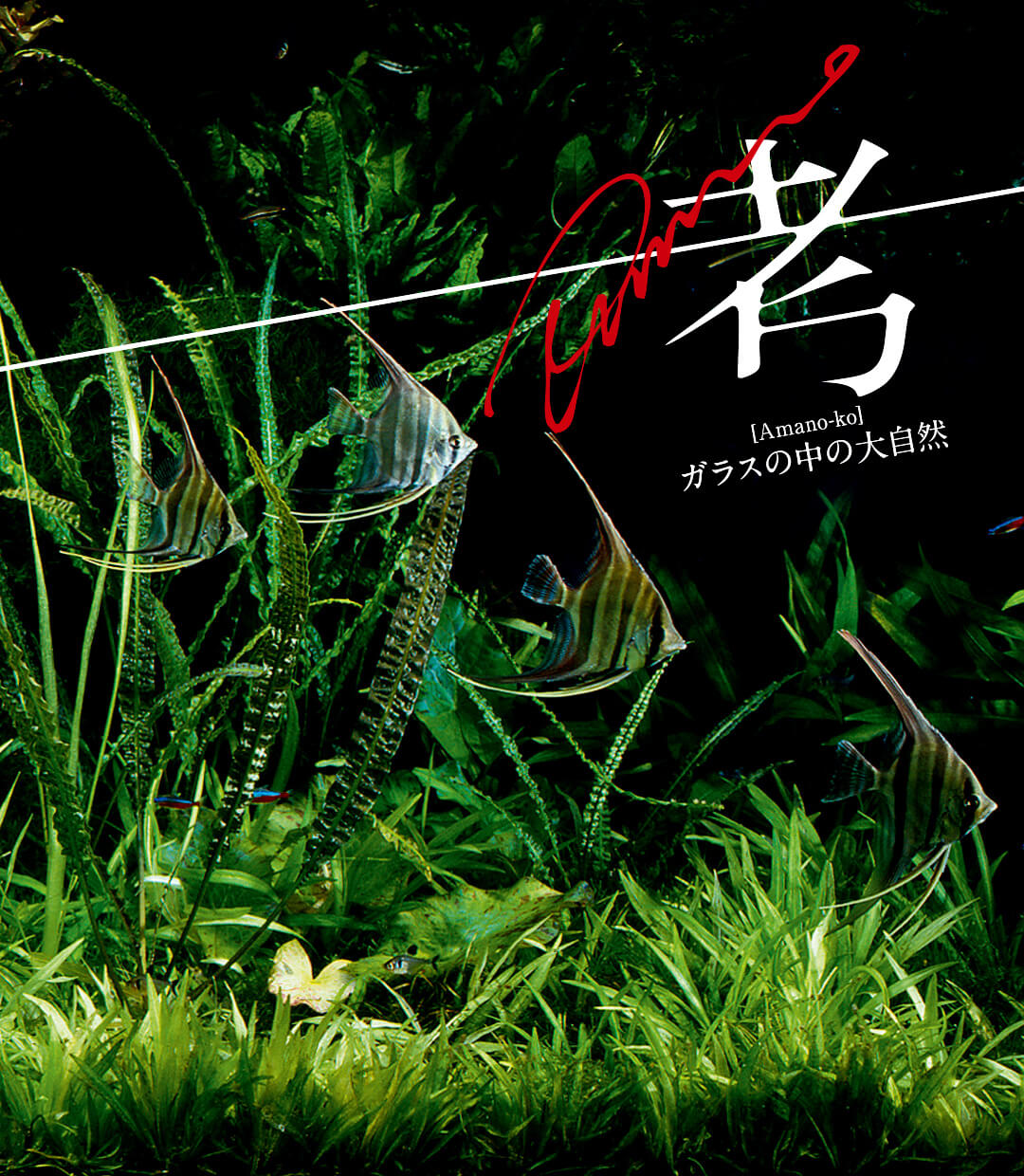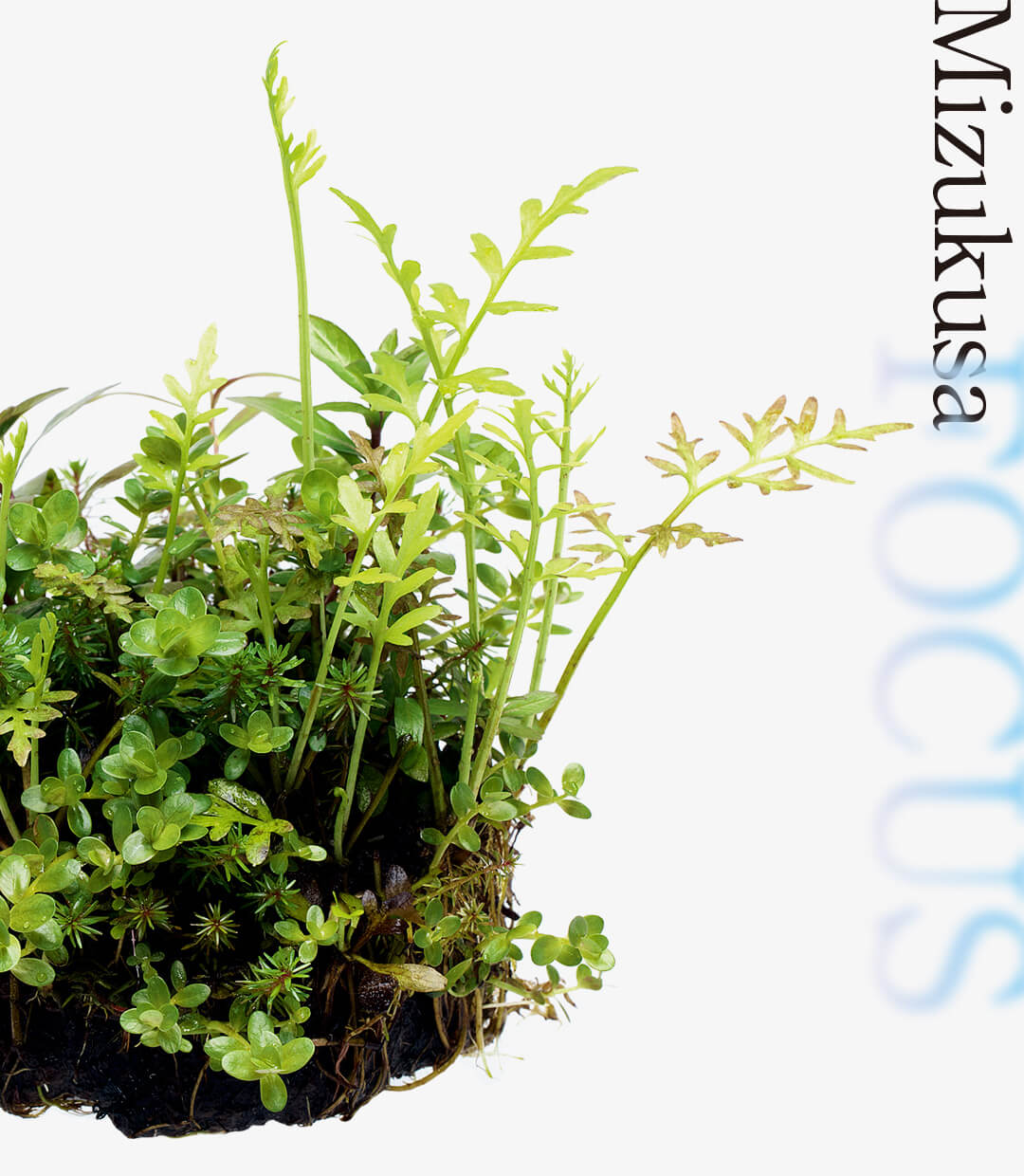NATURE IN THE GLASS ‘Nature Aquarium in public facilities’
Nature Aquarium in public facilities that inherited the concept of “long-term maintenance”
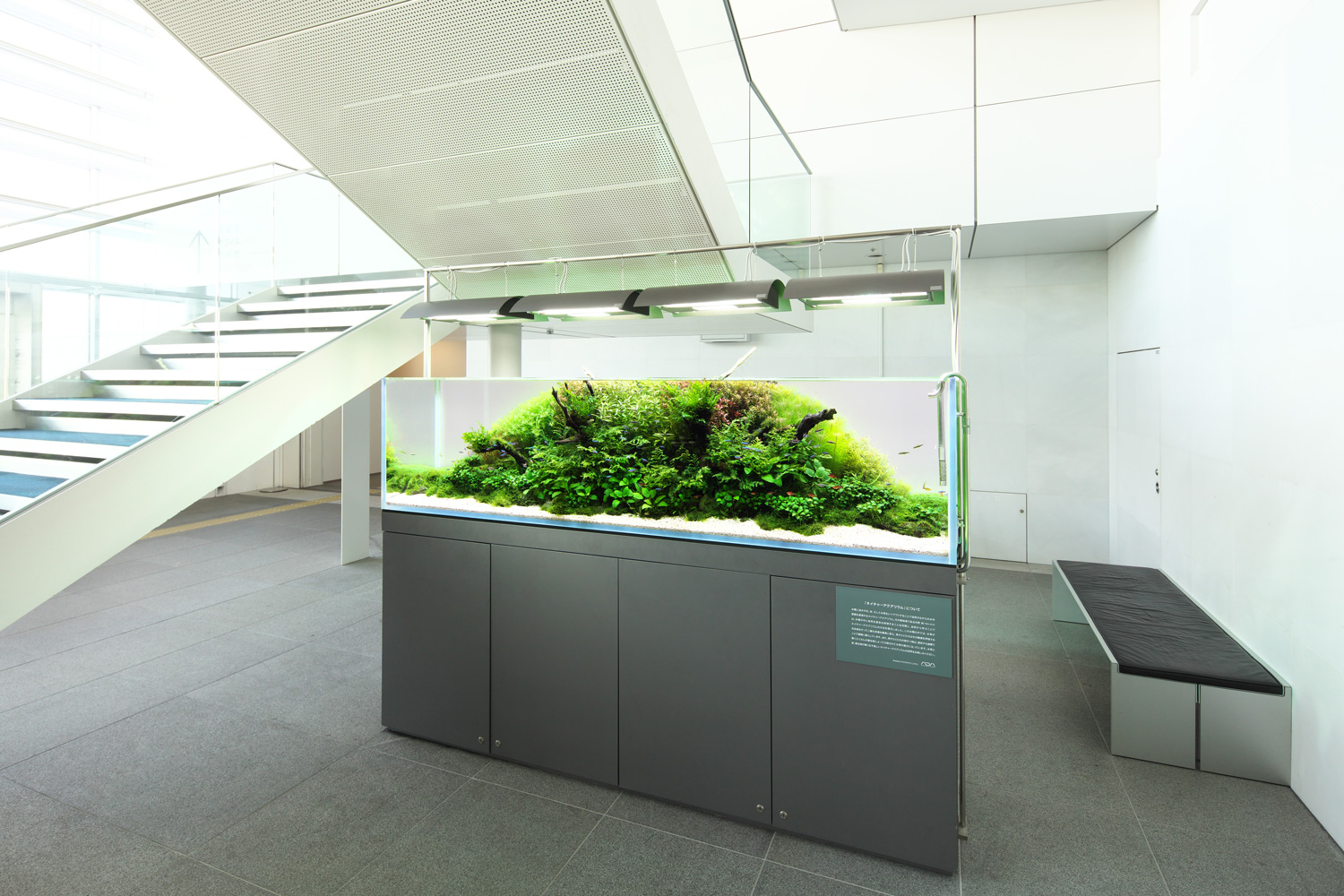
Size: W240×D60×H60(cm)
Photo taken on: April 1, 2021
Toki Messe is a convention center representing Niigata, and the integrated convention facilities include large exhibition hall, art museum and hotel etc. It gets crowded with many people during events etc. For that reason, it can be said that this aquascape is the one delighting many people the most among aquarium tanks maintained by ADA. The long-term maintenance in Nature Aquarium means to maintain scenery where the beauty dwells over time just like nature. The concept of long-term maintenance that Takashi Amano had had since he first established Nature Aquarium and his know-hows are taken over by the current maintenance staff. This aquascape, which is more 10 years old still attracts so many people with the beauty of aquatic plants, and makes us feel the beauty of eternal nature.
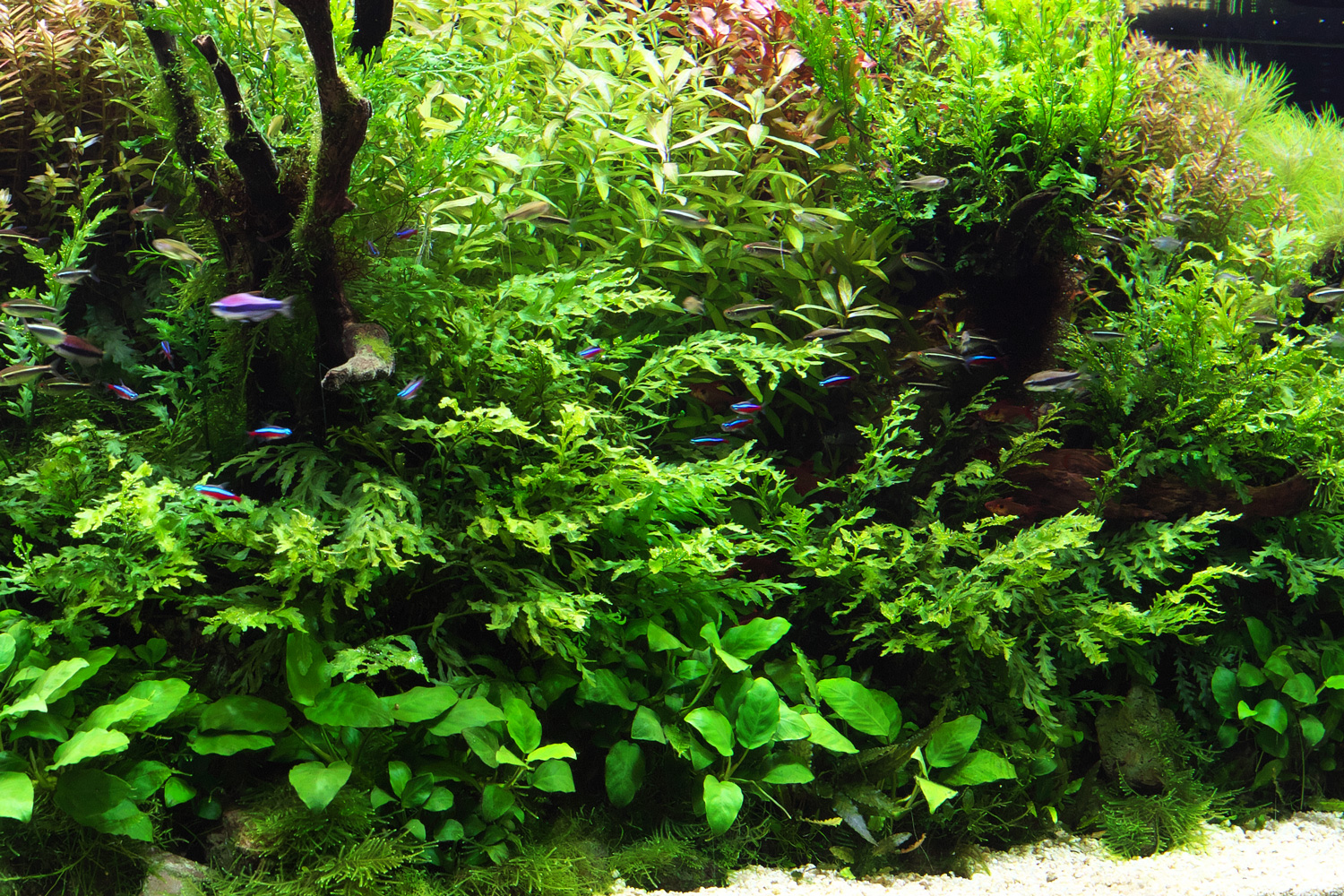
Utilization of shade aquatic plants
Because slow-growing shade aquatic plants don’t grow large so drastically, they are unlikely to spoil the scenery. For such a large aquarium tank installed in a public facility, it is important to create a structure with shade aquatic plants like Anubias, and by doing so, it will be easier to maintain the scenery in the long run.
Because slow-growing shade aquatic plants don’t grow large so drastically, they are unlikely to spoil the scenery. For such a large aquarium tank installed in a public facility, it is important to create a structure with shade aquatic plants like Anubias, and by doing so, it will be easier to maintain the scenery in the long run.
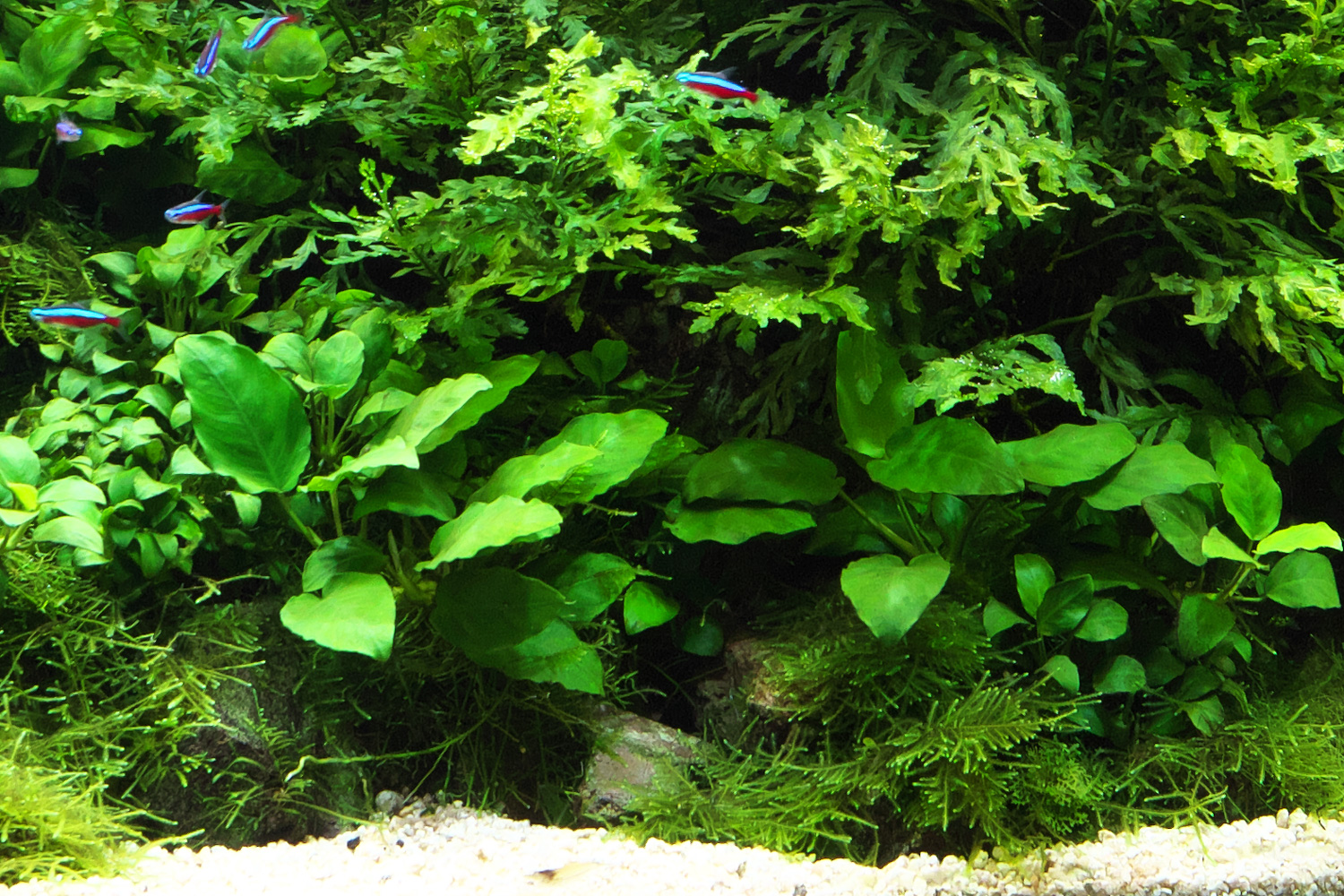
Complete measures against algae
One of the problems for keeping aquascapes beautifully in the long-term is algae outbreaks. By adding more Caridina multidentata, Crossocheilus oblongus and Otocinclus sp. than usual as a measure against algae, patchy algae growing on Anubias are controlled well.
One of the problems for keeping aquascapes beautifully in the long-term is algae outbreaks. By adding more Caridina multidentata, Crossocheilus oblongus and Otocinclus sp. than usual as a measure against algae, patchy algae growing on Anubias are controlled well.
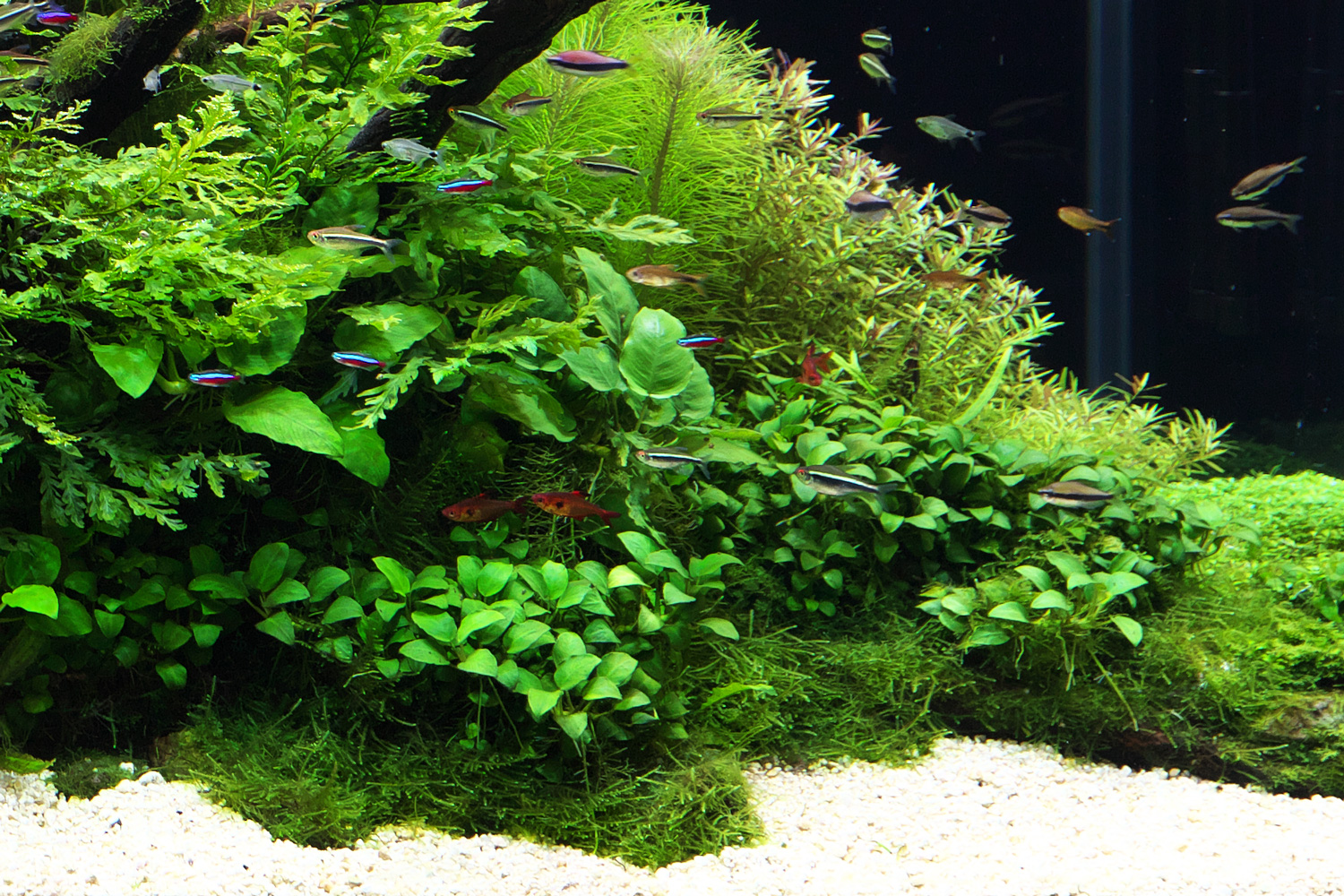
Tips for long-term maintenance start from the substrate.
Power Sand laid at the bottom where the most water pressure is applied in the aquarium tank helps keep water permeability and gradually give nutrients to aquatic plant roots over time. Those effects appear in the growth of aquatic plants thriving in the water.
Power Sand laid at the bottom where the most water pressure is applied in the aquarium tank helps keep water permeability and gradually give nutrients to aquatic plant roots over time. Those effects appear in the growth of aquatic plants thriving in the water.
What it means to maintain aquarium in the long-term
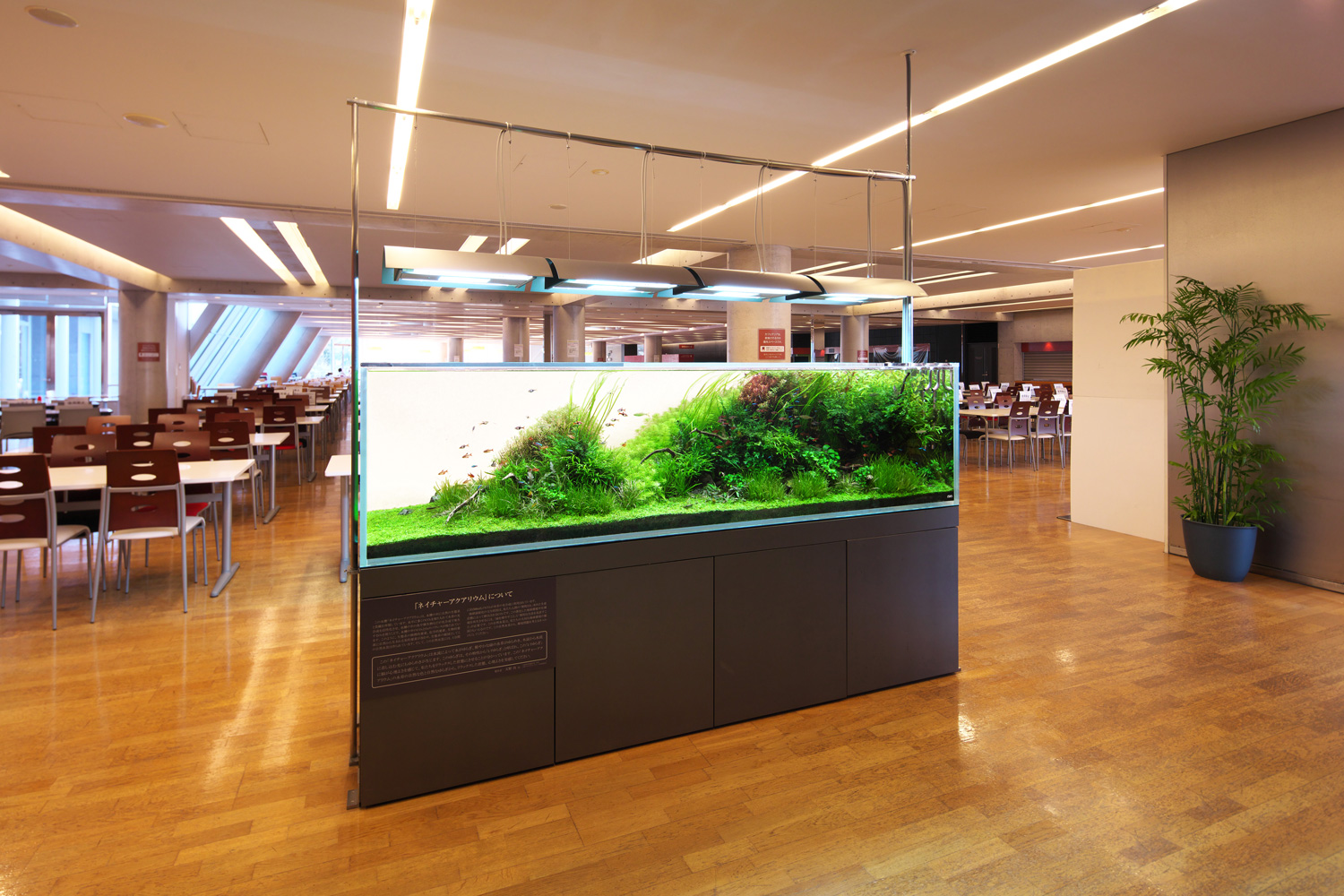
Size: W240×D60×H60(cm)
Photo taken on: March 31, 2021
This aquarium on the campus of Niigata University of Pharmacy and Applied Life Sciences was created in February, 2013. There are several aquarium tanks maintained by ADA in hospitals or public facilities in Niigata City. The maintenance staff are working hard every day to fulfill the owners’ wishes to learn the beauty of nature and to give healing power to people who see the aquarium through the Nature Aquarium. Basically, the aquarium maintenance is once every 1 to 2 weeks, and because time frames that the maintenance tasks can be performed are limited on account of the circumstances of the facilities, the staff need to perform the necessary maintenance tasks in the limited time. For the aquarium tanks expected to be in the best condition, the ADA’s maintenance know-hows are utilized well.
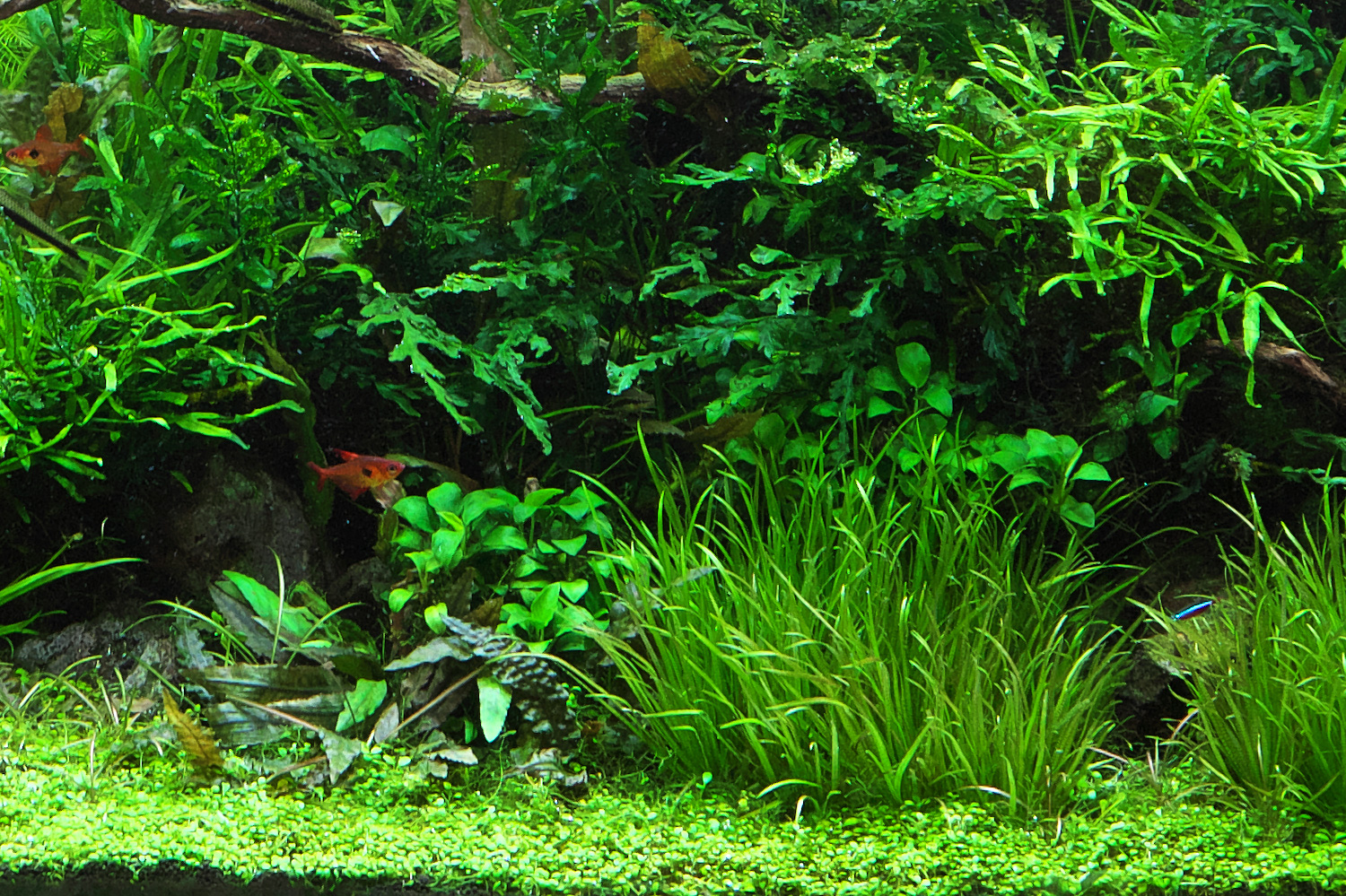
Choice of foreground plants unique to large aquarium
If aquatic plants in the foreground are overgrown in the whole aquarium, it becomes harder to maintain the aquascape. For that reason, aquatic plants that don’t grow so tall such as Glossostigma and Echinodorus tenellus are chosen for this aquascape. Blyxa novoguineensis is used to connect the foreground and midground, but because it doesn’t develop runners, and its volume will not increase, the growth is easier to control than other midground aquatic plants such as Cryptocoryne.
If aquatic plants in the foreground are overgrown in the whole aquarium, it becomes harder to maintain the aquascape. For that reason, aquatic plants that don’t grow so tall such as Glossostigma and Echinodorus tenellus are chosen for this aquascape. Blyxa novoguineensis is used to connect the foreground and midground, but because it doesn’t develop runners, and its volume will not increase, the growth is easier to control than other midground aquatic plants such as Cryptocoryne.
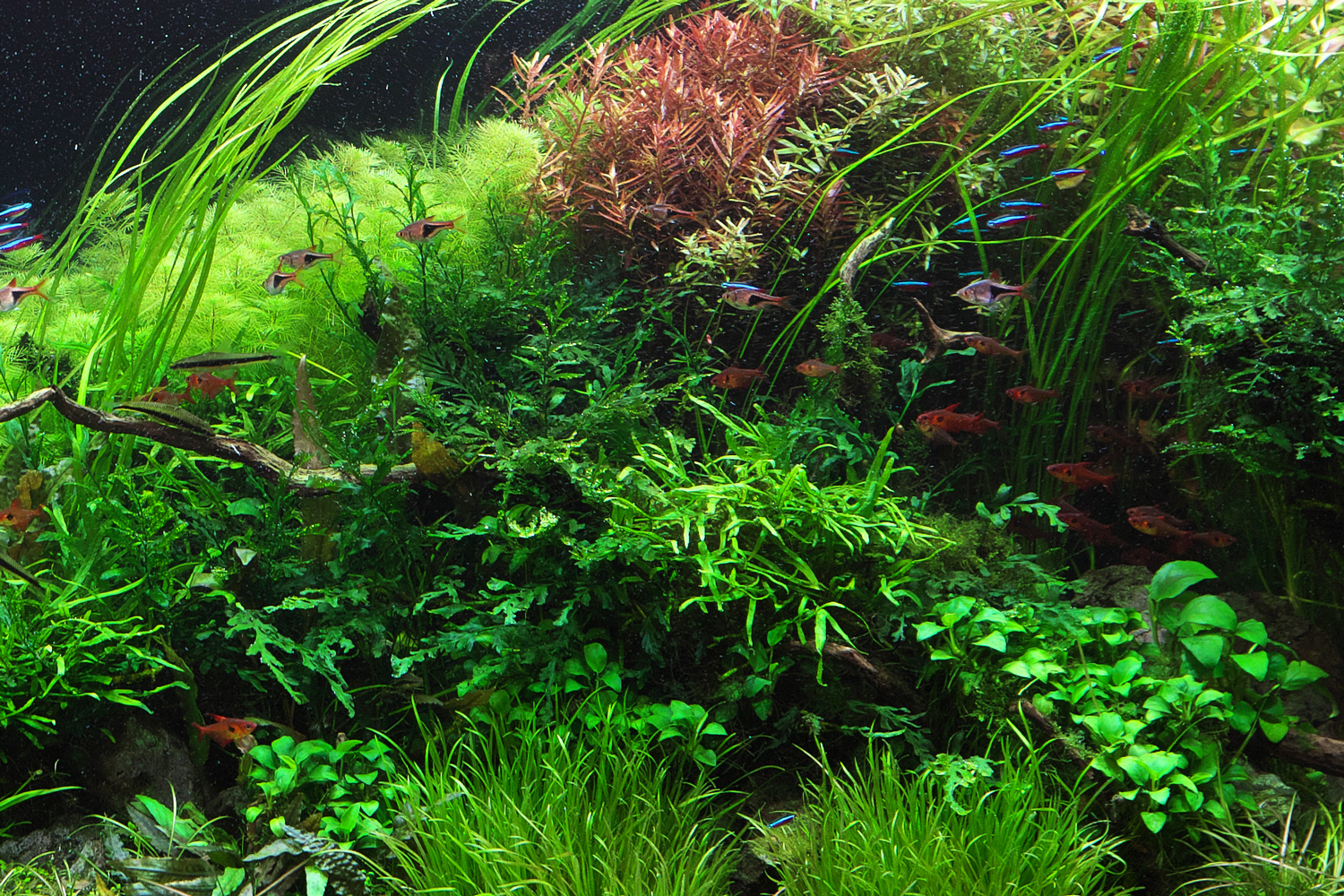
Choosing aquatic plants that are resistance to trimming
By repeatedly trimming them, it helps stem plants promote the development of axillary buds and create a line of dense stem plants. Although it is the basis of maintenance, even if old lower leaves fall out, midground plants like Anubias play a role in hiding the exposed stems, and it can make the scenery look beautiful for a long time.
By repeatedly trimming them, it helps stem plants promote the development of axillary buds and create a line of dense stem plants. Although it is the basis of maintenance, even if old lower leaves fall out, midground plants like Anubias play a role in hiding the exposed stems, and it can make the scenery look beautiful for a long time.
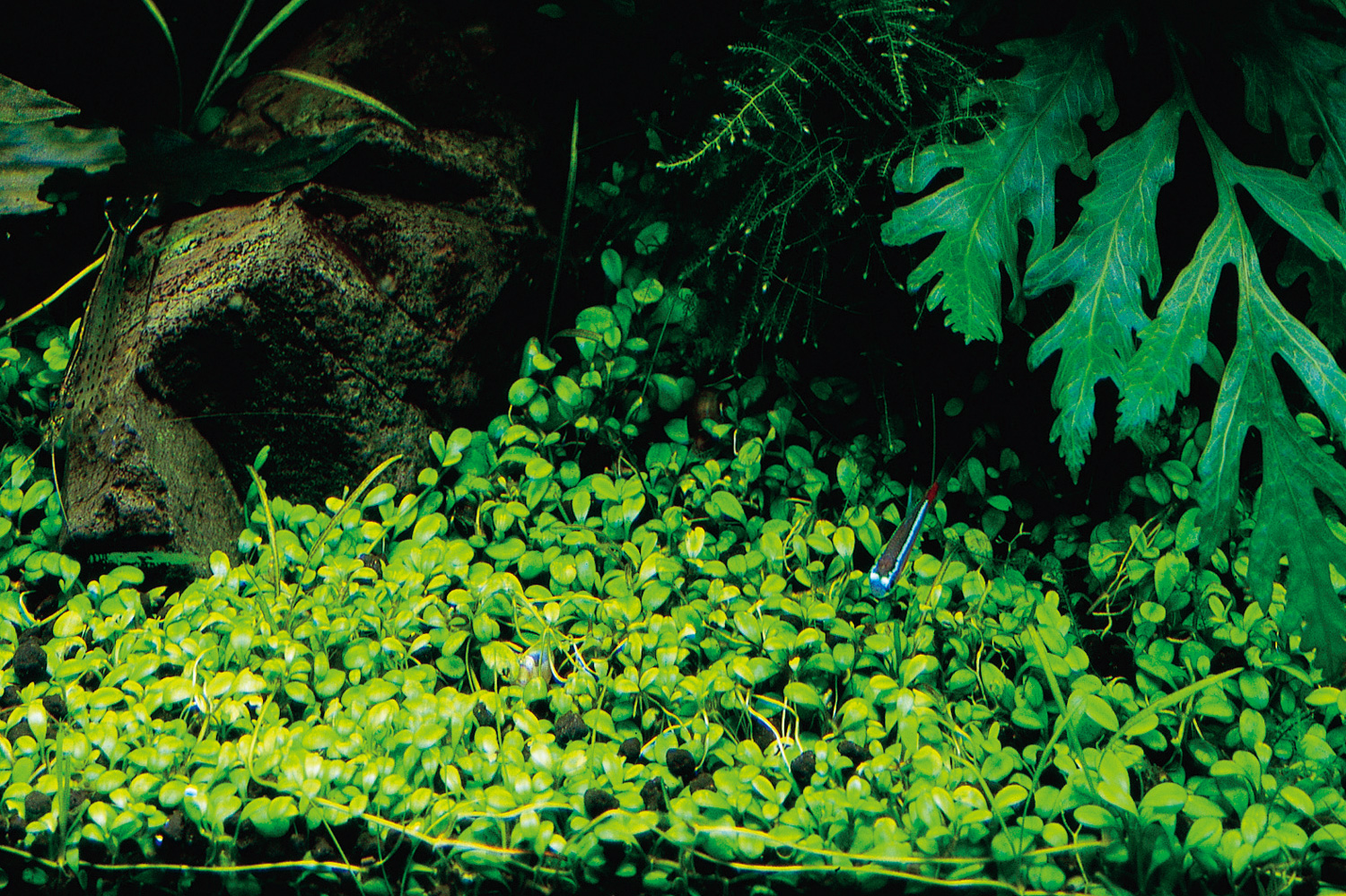
Maintenance techniques for foreground plants
When dwarfing or poor growth of foreground plants begins to appear, it is important remove sludge and water accumulated between the foreground plants and soil together. By sprinkling a thin layer of Amazonia Powder over it, new soil can be added to the layer that was clogged with sludge.
When dwarfing or poor growth of foreground plants begins to appear, it is important remove sludge and water accumulated between the foreground plants and soil together. By sprinkling a thin layer of Amazonia Powder over it, new soil can be added to the layer that was clogged with sludge.
